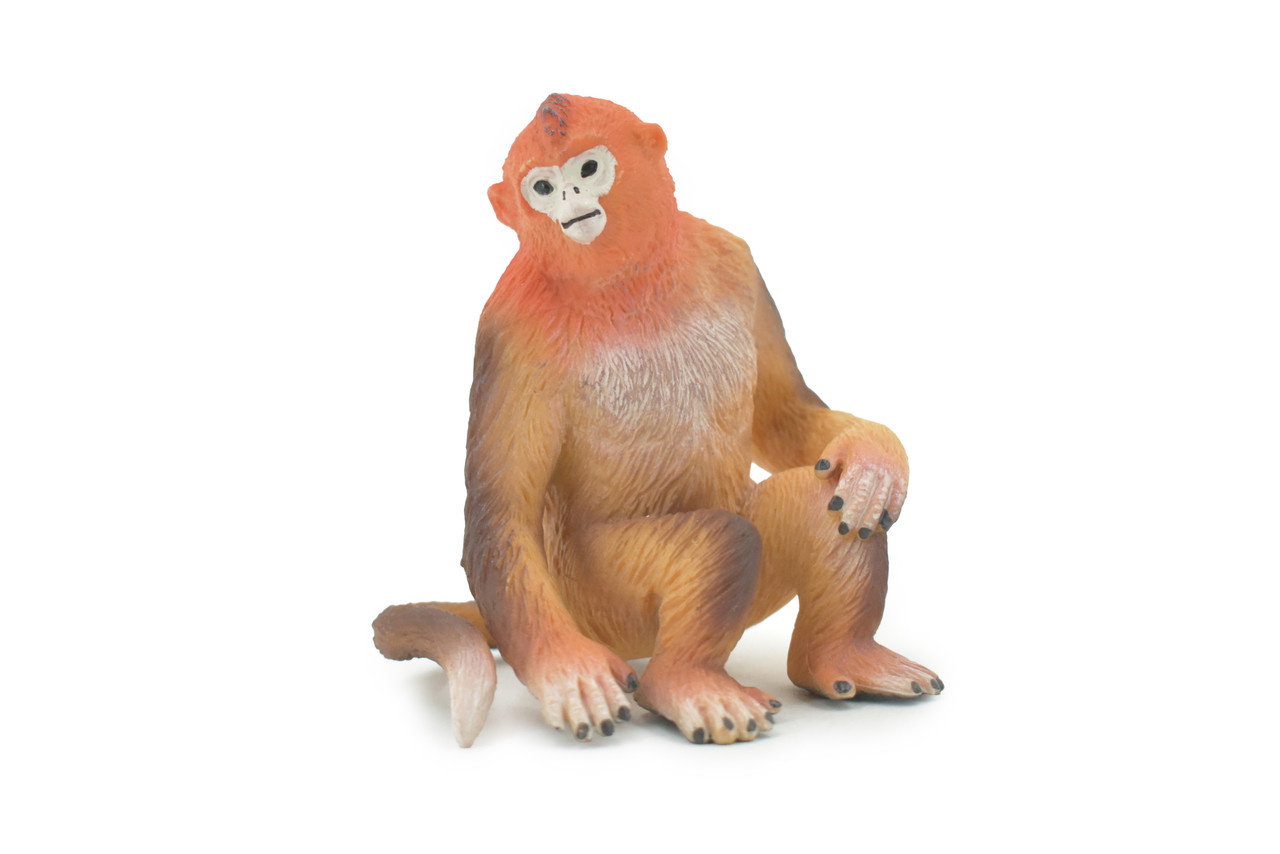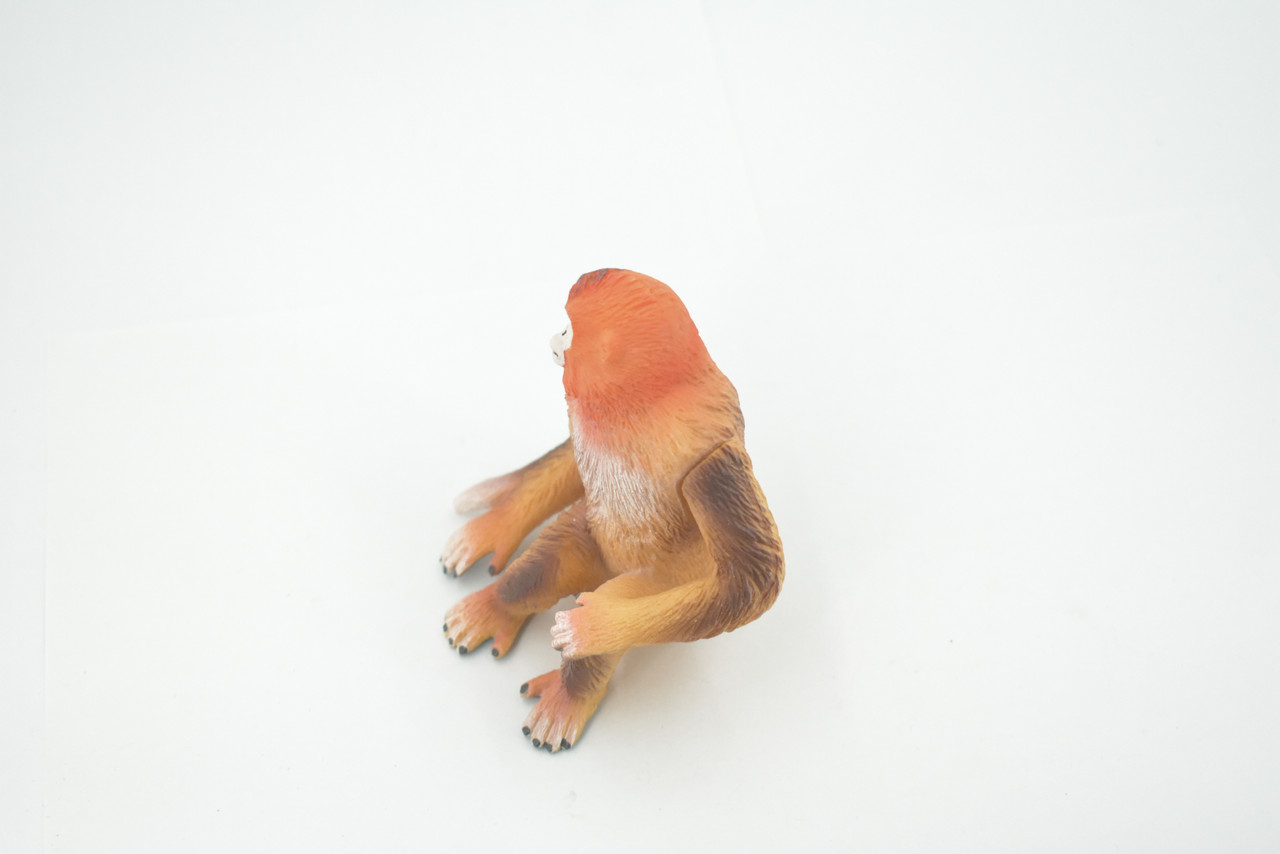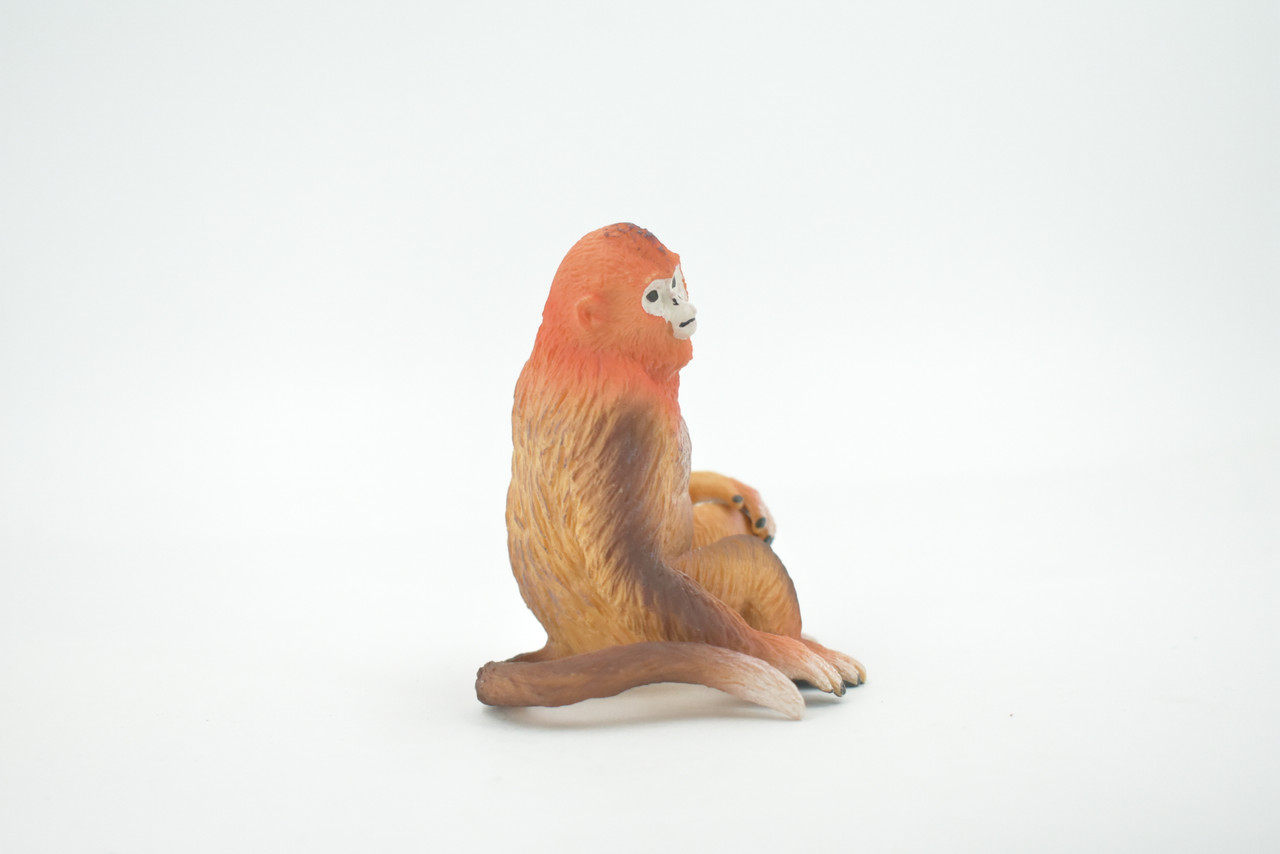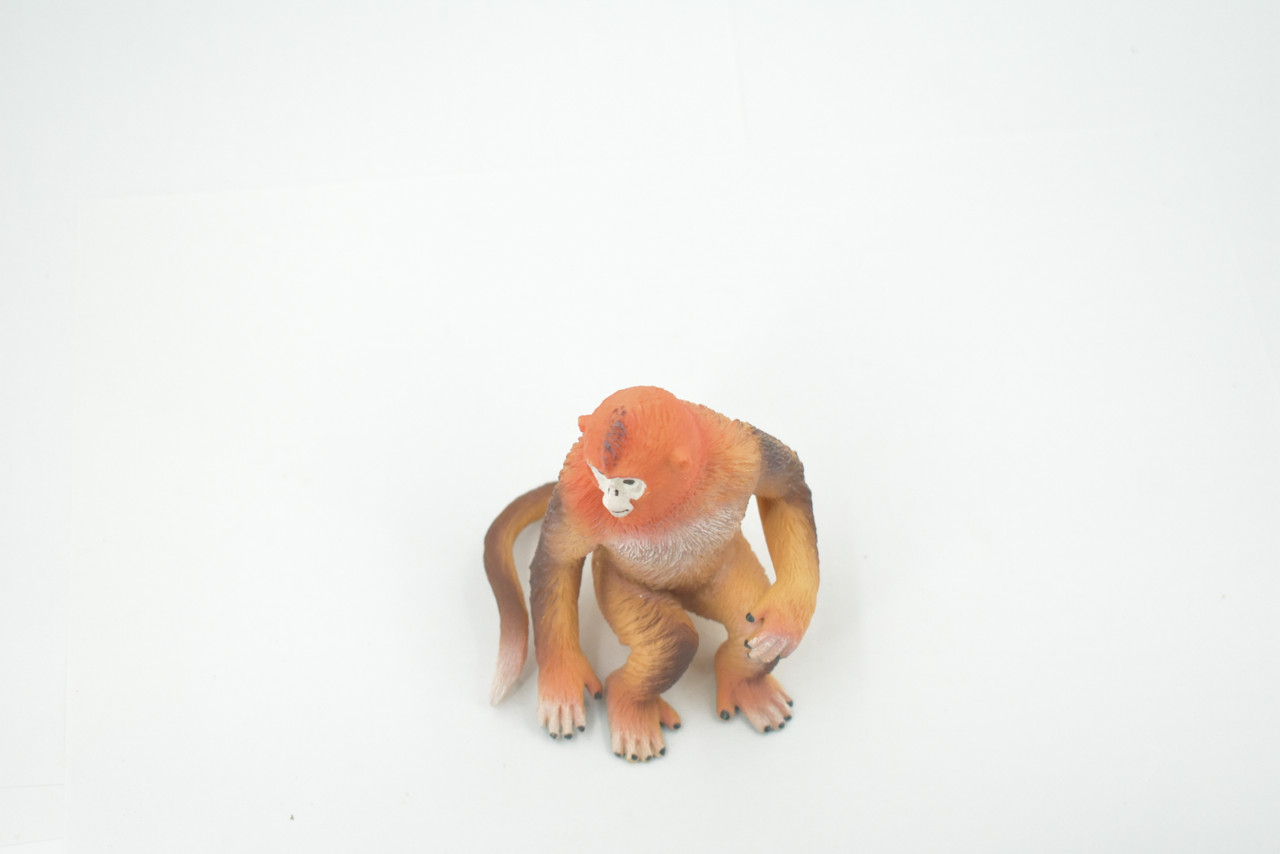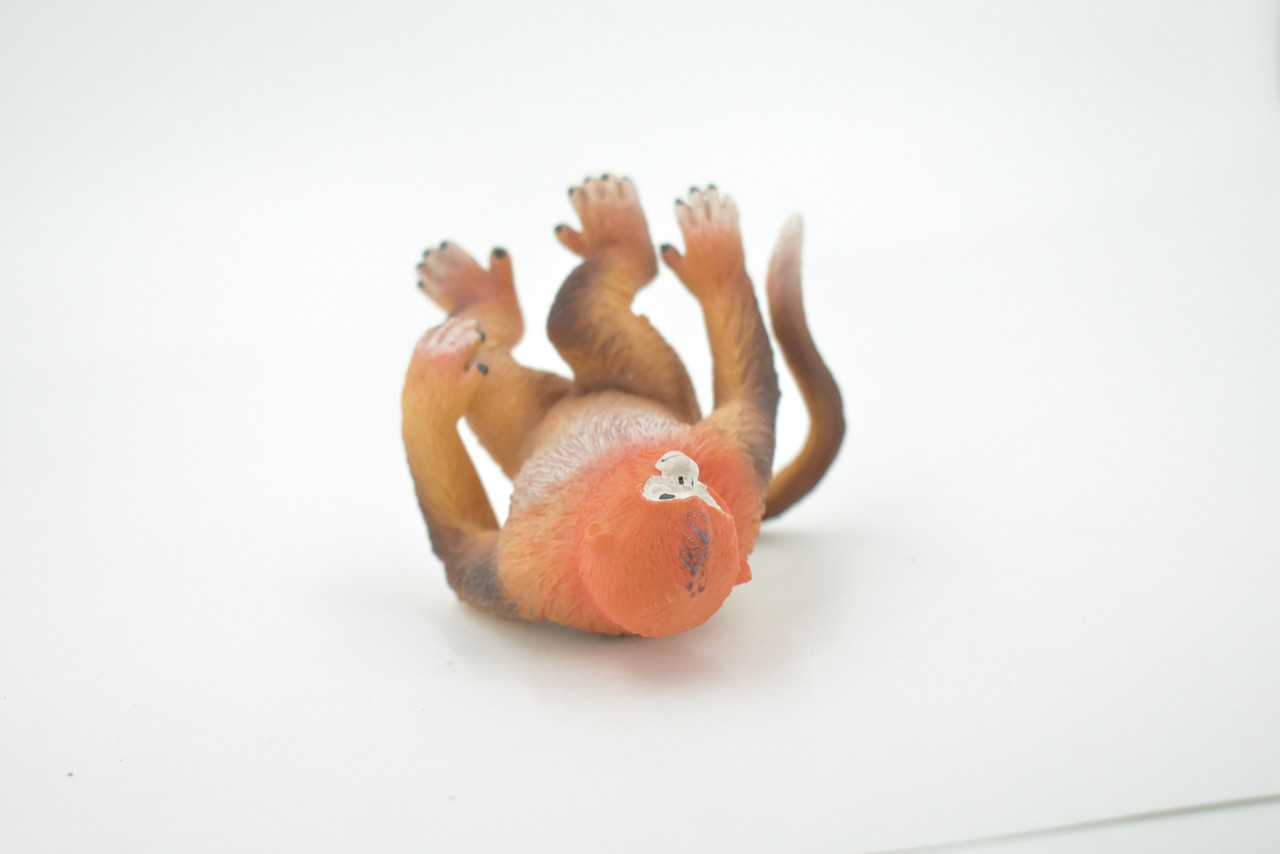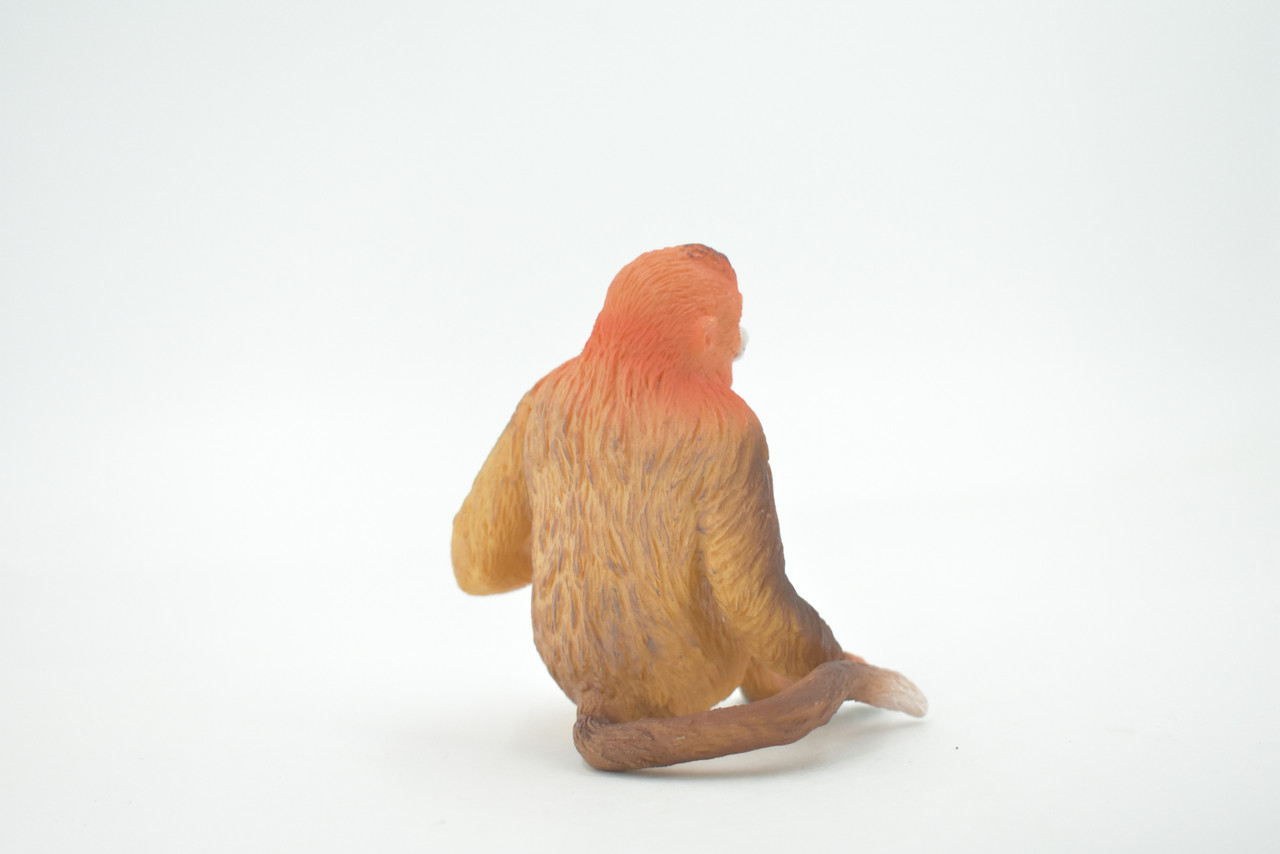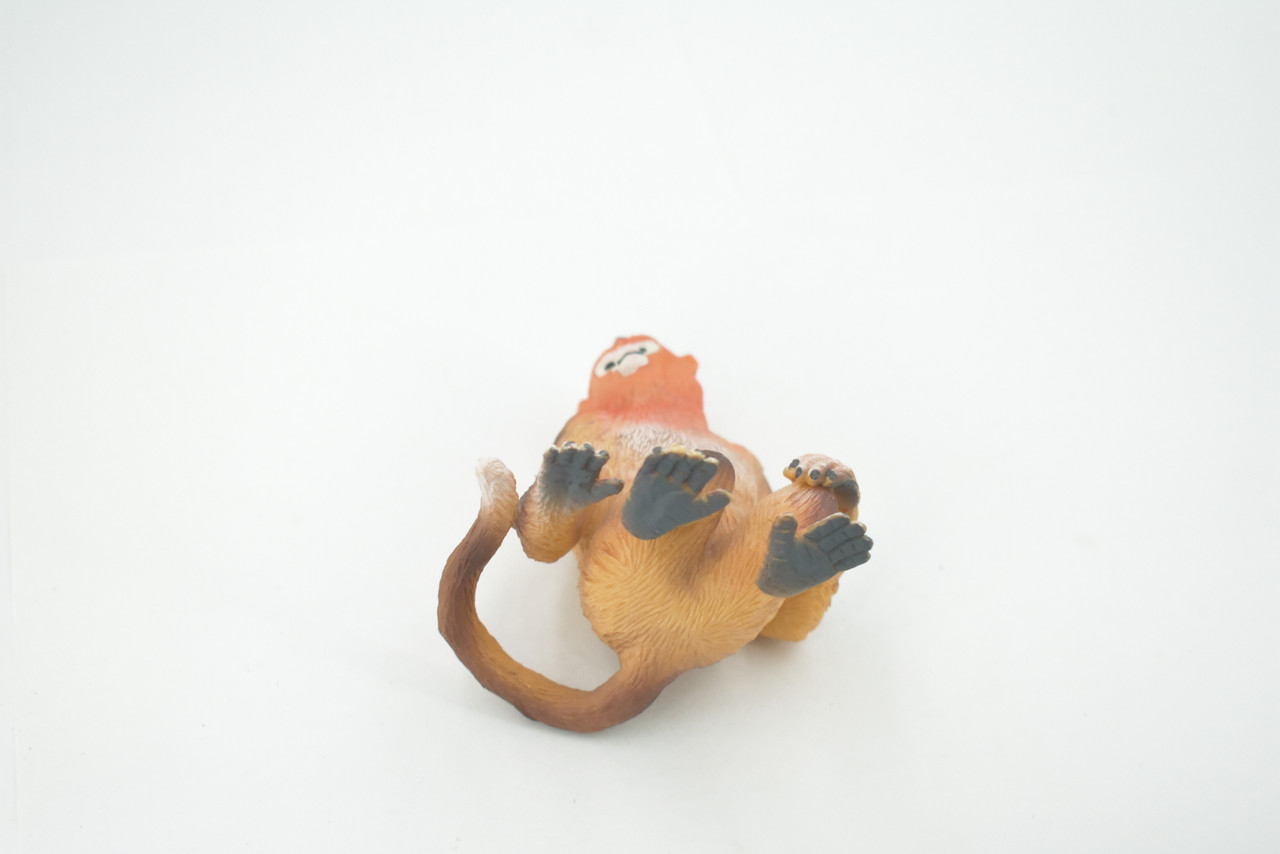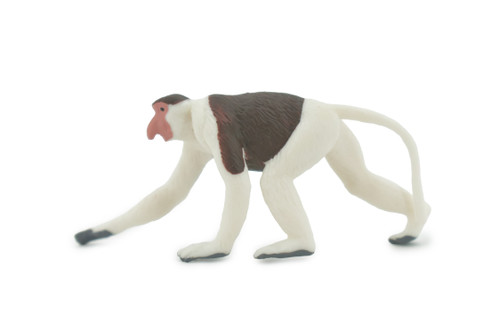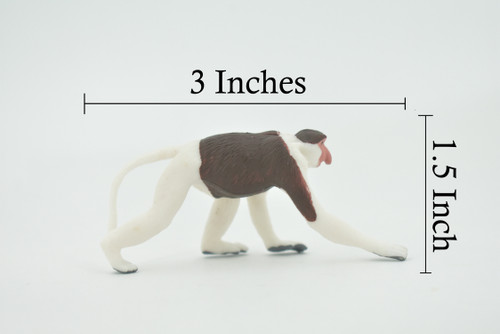Product Description
This Golden monkey, 3 1/2" figure includes hand painted features to give it realistic details that are true to natural anatomy. This figure is considered a museum quality replica. Highest Quality Natural Rubber.
The golden monkey is a subspecies of the blue monkey. Along with several other subspecies, the golden monkey was isolated as a result of continuous divisions of forest habitat and subsequently adapted to live in high-altitude forests. The golden monkey is similar to the blue monkey except for its golden-orange backside. Besides this coloration, golden monkeys have black bodies and brown faces. Females are lighter in color than males. The golden monkey resides in the highland forests of Central Africa, which are located in the mountain ranges of Volcanoes National Park in Rwanda, Mgahinga in Uganda and Virunga and Kahuzi-Biéga in the Democratic Republic of the Congo. Golden monkeys prefer habitats with abundant fruit and bamboo in order to accommodate their diet. They typically move between areas depending on the season. Golden monkeys form groups between 3 and 80 members that are typically presided over by a dominant male. Groups at higher elevations are usually smaller in size. These arboreal primates nest at the top of groves of bamboo, weaving the dense plants together to make a sleeping area for a subgroup of approximately four monkeys. The monkeys forage for food during the day, coming back to one of several sleeping sites each night. Golden monkeys have a wide range of facial expressions and vocalizations. Males have calls they use during territorial confrontations. Males do not always stay with the group, so sometimes the females take on the task of protecting territories. They have a series of calls to alert others to potential threats, as well as ones that promote unity within the group. Younger monkeys use vocalizations that showcase their submissiveness and to accompany mobbing behavior. These opportunistic feeders primarily eat bamboo, including the leaves, shoots and branches, as well as the ripe fruit. During seasons where ripe fruit is available, they will remain close to the fruit trees. At the start of the rainy season when bamboo shoots begin to grow, they move closer to the bamboo trees. They also incorporate insects (the most common being butterfly pupae), flowers and shrubs into their diet. These primates have cheek pouches in which they store food. As the golden monkeys’ habitat becomes increasingly fragmented, conservation efforts are underway to protect this primate. Guided treks into reserves such as Volcanoes National Park generate revenue for this endangered species, and ecotourism in Central Africa is providing incentives to conserve vulnerable species that would otherwise have succumbed to extinction.
Thanks for visiting Collectible Wildlife Gifts, the leading provider of high-quality, lifelike animal Designs and gifts! We work hard to ensure we have a diverse range of products. Each product is inspected for their quality craftsmanship. Whether you're searching for a great gift or seeking educational designs for displays, we’ve got you covered.
At Collectible Wildlife Gifts, our products appeal to a wide range of customers, including family, friends, and educators. Our products are trusted and used by professional organizations as well including aquariums, zoos, and movie studios.
Our extensive line of products boasts everything from plush sharks to educational animal growth cycles. Our products bring joy to recipients, and serve as valuable educational resources, sparking curiosity and fostering learning.
Discover the wonders of the natural world with Collectible Wildlife Gifts. Browse our collection today!

